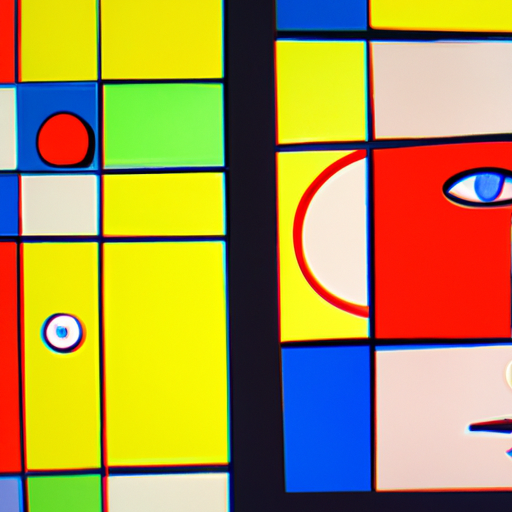
-
Table of Contents
Abstract Realities: Design through Kandinsky’s Lens

Abstract art has long been a source of fascination and inspiration for designers across various disciplines. One of the pioneers of abstract art, Wassily Kandinsky, revolutionized the way we perceive and create art. His unique approach to design and his exploration of abstract realities have had a profound impact on the world of design. In this article, we will delve into Kandinsky’s lens and explore how his ideas can be applied to contemporary design practices.
The Influence of Kandinsky
Wassily Kandinsky, a Russian painter and art theorist, is often credited as the pioneer of abstract art. His groundbreaking work in the early 20th century challenged traditional notions of representation and paved the way for a new form of artistic expression. Kandinsky believed that art should evoke emotions and spiritual experiences rather than simply imitate the physical world.
Kandinsky’s theories and ideas were not limited to the realm of fine art. His principles of abstraction and the use of color and form have found resonance in various design disciplines, including graphic design, interior design, and even product design. By understanding Kandinsky’s lens, designers can tap into the power of abstraction to create visually compelling and emotionally resonant designs.
The Power of Abstraction
Abstraction, as championed by Kandinsky, allows designers to move beyond the constraints of literal representation and tap into the realm of emotions and ideas. By distilling complex concepts into simplified forms and colors, designers can create visual experiences that transcend the limitations of the physical world.
One example of the power of abstraction in design is the iconic Nike logo. The simple swoosh symbol, devoid of any literal representation, has become one of the most recognizable logos in the world. It represents the essence of the brand and evokes a sense of speed, movement, and athleticism. The abstract nature of the logo allows it to be versatile and adaptable across various applications and contexts.
Color and Form
Kandinsky believed that color and form have inherent emotional and spiritual qualities. He explored the relationships between different colors and their ability to evoke specific emotions. This understanding of color theory can be applied to design to create impactful visual experiences.
For example, in web design, the choice of color palette can greatly influence the user’s perception and emotional response. Warm colors like red and orange can create a sense of energy and urgency, while cool colors like blue and green can evoke a feeling of calmness and tranquility. By strategically using colors, designers can guide the user’s emotions and create a more engaging and immersive experience.
Form, on the other hand, refers to the shapes and structures used in design. Kandinsky believed that certain forms have inherent symbolic meanings. For instance, a circle represents unity and wholeness, while a triangle can symbolize stability and balance. By incorporating these symbolic forms into design, designers can add layers of meaning and create a deeper connection with the audience.
Case Study: Apple
One of the most successful examples of incorporating Kandinsky’s principles into design is Apple. The tech giant’s products and branding are known for their minimalist and abstract aesthetic. The clean lines, simple shapes, and restrained color palette create a sense of elegance and sophistication.
Apple’s use of abstraction goes beyond just the visual aspect. The company’s products are designed to be intuitive and user-friendly, stripping away unnecessary complexity and focusing on the essential functions. This approach aligns with Kandinsky’s belief in the power of simplicity and the ability of abstract forms to convey meaning.
Designing for Emotion
Kandinsky’s emphasis on evoking emotions through art can be applied to design to create more impactful and memorable experiences. By understanding the emotional responses triggered by different colors, forms, and compositions, designers can craft designs that resonate with the audience on a deeper level.
For example, a healthcare app can use calming colors and organic forms to create a sense of trust and comfort. On the other hand, a gaming website can employ vibrant colors and dynamic compositions to evoke excitement and energy. By tailoring the design to the desired emotional response, designers can create experiences that leave a lasting impression.
Summary
Wassily Kandinsky’s exploration of abstract realities has had a profound impact on the world of design. By embracing abstraction, designers can move beyond literal representation and tap into the realm of emotions and ideas. The use of color and form, as championed by Kandinsky, allows designers to create visually compelling and emotionally resonant designs. Case studies like Nike and Apple demonstrate the successful application of Kandinsky’s principles in contemporary design practices. By designing for emotion, designers can create experiences that leave a lasting impression on the audience. In conclusion, Kandinsky’s lens offers valuable insights and inspiration for designers seeking to push the boundaries of creativity and create designs that transcend the physical world.
